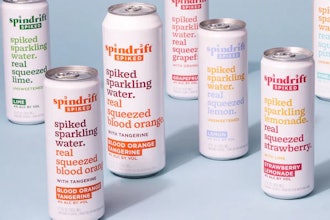Predicting the future is by no means a science, but here’s a best guess as to what trends in the food and beverage industry may gain traction in 2018.
Innovation and Investment
Consumers continue to drive innovation in the food and beverage industry by demanding more from the brands that they consume. The data shows that consumers increasingly prefer brands that embrace authenticity, social engagement, traceable sourcing, clean labels, healthier ingredients and functional benefits. Smaller brands have reacted faster to these evolving consumer needs, making those brands ripe for investment or acquisition by both traditional investors and strategic buyers.
Last year was a big year for food and beverage megers and acquisition activity of high growth brands, with Kellogg’s acquisition of RxBar, Nestle’s purchase of Chameleon Cold Brew, Hershey’s acquisition of Amplify Brands and Arca Continental’s purchase of Deep River Snacks, among others, making headlines before the year came to a close. In every case, acquirers were interested in higher value products with loyal customer bases.
For larger brands, investment and acquisition have largely replaced traditional research and development activity, as the cost of acquiring a small innovative brand is often cheaper, and less risky, than creating and marketing a new brand from scratch. In-house innovation is often suppressed, either because of a lack of appetite for risk, or because new brand creation creates internal political toil and potential line cannibalization. It’s the reason that companies like General Mills and Kellogg’s now deploy their own strategic venture capital funds to find and invest in these innovative brands, as a path to eventual acquisition.
In addition, more traditional food centric venture capital funds like AccelFoods (powered by a recent investment from Danone), VMG and Cavu Venture Partners continue to put their money to work in high-growth startup brands that are stealing shelf space from the established players. With activity in 2017 reaching all-time highs, there’s no reason to think that there will be a slowdown in 2018.
The Continued Growth of E-Commerce and Online Grocery
Amazon’s $13.7 billion acquisition of Whole Foods is bound to impact the way that consumers discover new brands and purchase their favorite products. While it’s true that only a small fraction of food and beverage sales are transacted online, the number is growing, and brands like RxBar, Soylent and Wicked Good Cupcakes have shown that you can be successful selling directly to consumers out of the gate.
The Amazon model will also likely disrupt traditional distribution channels, as retailers leverage their existing infrastructure and operational capabilities, tap into their consumers’ online buying habits and data, and deliver on their consumer’s preference for fast and convenient delivery. Target’s recent acquisition of Shipt and Walmart’s acquisition of Jet.com are evidence of what is likely to be a significant and permanent shift in the food and beverage world.
Functional & “Free From” Foods
Probiotics will continue to be a key feature of innovation in 2018, with kombucha, yogurt and kimchi brands all benefiting from consumers’ increased desire to improve gut health. Not to be outdone, 2018 promises to see the growth of prebiotics companies, as brands like Halsa react to consumers’ preferences for a more expansive approach to wellness. High protein products, and collagen products, will also likely see gains in 2018, as brands like Buff Bake and BRU Broth, continue to fuse functional benefits with traditional categories like desserts and soups.
Expect 2018 to also see a continued increase in natural products and “free from” foods, as consumers are increasingly more aware of, and involved with, the relationships between their genetic disposition and the foods they consume. Brands like Drink Maple, Free-to-Eat and Cali’Flour Foods deliver delicious products both to consumers with specific health needs, but also to those just seeking healthier alternatives.
Cold Brew Coffee is Hot!
Lastly, and because no article about delicious things in the world should be complete without it, 2018 promises to continue the trend showing that consumers love better coffee. A lot of it. And particularly, consumers have expressed a preference for better coffee, from better sources, processed in a better way, yielding a better product.
In fact, the rise of cold brew coffee as a category is really a microcosm for the innovative food and beverage industry as a whole. Tapping into consumer demands, cold brew brands have exploded in recent years, taking advantage of expanding taste palates, artisanal and craft sensibilities and the desire for increased functionality. From sparkling to nitro, ready-to-drink to keg, sweetened to blood orange, and single source to peppermint, cold brew is becoming both ubiquitous and highly varied. Brands like Wandering Bear Coffee, which initially marketed its bag-in-box cold brew using a business to business model before expanding into retail with a growing product line, or Chameleon Cold Brew, recently acquired by Nestle, show that the path of coffee to consumer continues to require innovation, investment and entrepreneurship.
With all that in mind, 2018 looks to be an amazing and delicious year in the world of food and beverage.
Will Bernat is a partner in Nutter’s Corporate and Transactions Department and a leader of the firm's Food and Beverage group.























